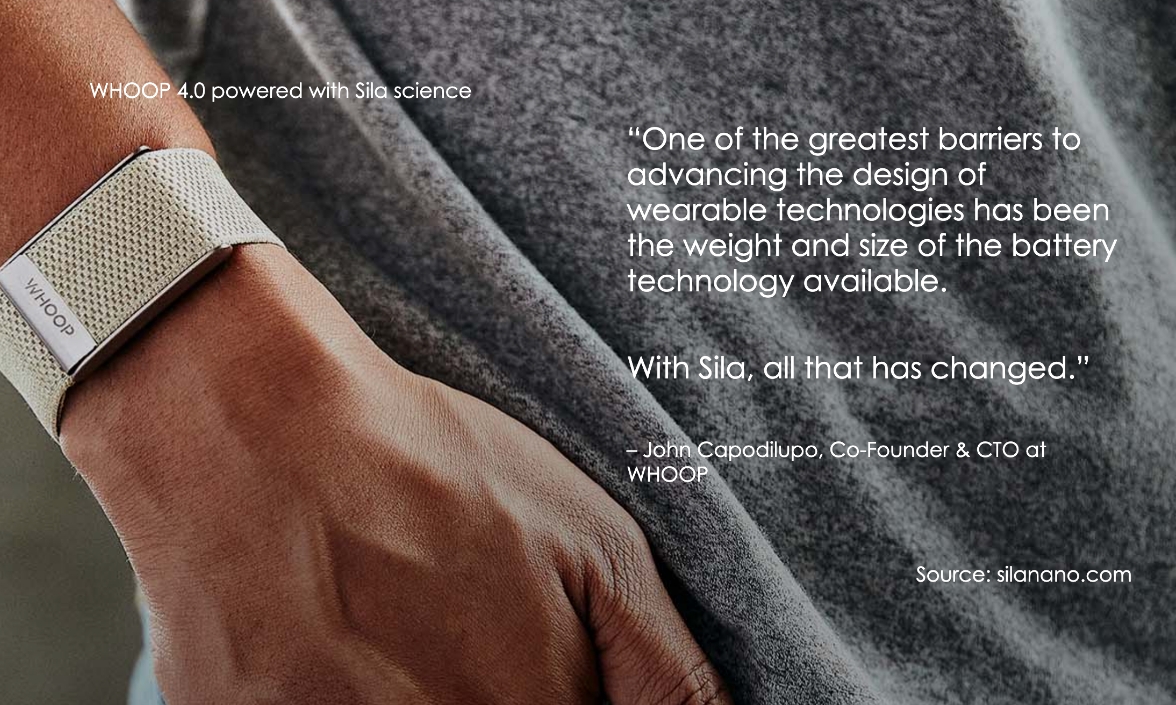Aionics Chats With Sila Nanotechnologies CEO Gene Berdichevsky On Si Anode Commercialization
News

Last week, Sila Nanotechnologies CEO Gene Berdichevsky announced Sila is bringing their proprietary silicon anode technology to market in the personal fitness tracker WHOOP 4.0. The announcement sparked plenty of excitement in the battery world and was even covered by the New York Times (featuring a cameo quote from Aionics Chief Scientist Venkat Viswanathan) and others.
Aionics sat down with Berdichevsky for an exclusive Q&A about this exciting milestone.
Q: Can you share with us what your team announced last week?
Berdichevsky: Last week, we announced that WHOOP 4.0 is now the first product in the market powered by Sila science. Sila’s silicon anode technology, along with some other cell improvements, created a nearly 20% increase in energy density from the cell in the WHOOP 3.0. This launch really marks the most significant chemistry breakthrough to reach the market since the introduction of original Li-ion chemistry in 1991.
Q: Can you describe your journey to this moment? How long did it take?
Berdichevsky: In 2011, when we founded the company, I thought we would need about five years to get our new battery chemistry to market, it ultimately took us 10 years. Most importantly, it took us 55,000 iterations to perfect the material and scale it.
Q: Can you talk about the data culture in your team and how that influenced your success?
Berdichevsky: A relentless data-first approach is needed to address this challenge – logging all 55,000 experiments uniquely and learning from those experiments was key. Having a very robust set of reactors that can precisely control every parameter allowed us to resolve improvements of 1% or 0.1%. A 20% breakthrough in batteries doesn’t come from one or two “eureka” moments, but rather a series of rigorous experiments, measurements, and iterations.
Q: What would you say was the most surprising thing you have learned in this process?
Berdichevsky: Innovating on battery chemistry and then mass-producing them is one of the hardest things in engineering. A battery is one of the only moving components in your phone or car. Yes — moving! With each charge and discharge, lithium atoms have to travel a distance of ~100 microns (that’s 1/100th of a centimeter) from anode to cathode, and back again. In every other component in your phone, like the display screen, only electrons and photons move — and those are massless particles so they do little or no damage. By contrast, when atoms move around, making and breaking covalent bonds, everything changes. Dealing with that physical change is extremely hard.
Q: Final thoughts to our newsletter readers?
Berdichevsky: You’ve shipped your first newsletter, congrats. In batteries, like in newsletters, you have to ship to compete. In case you missed it, Berdichevsky is referring to Aionics CEO Austin Sendek’s Twitter thread reflecting on the common philosophy underpinning Sila’s successful commercialization and Aionics’ growth strategy.
Newsletter Registration
Subscribe to our newsletter and stay updated with the latest from Aionics.


